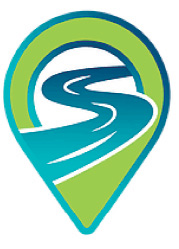Citizen Science
Stream Tracker Science
Science Scope—September/October 2021 (Volume 45, Issue 1)
By Jill Nugent
Stream Tracker is a citizen science project that needs your help to study streams and stream flow nationwide. With support from NASA, the U.S. Forest Service, and Colorado State University, the Stream Tracker citizen science project is helping to fill gaps in our understanding of intermittent streams, or streams that do not have continuous water flow throughout the year. It is important to study intermittent smaller streams as they feed into larger bodies of water including major rivers throughout the United States.
Freshwater streams have various flow states. Many streams (especially smaller streams) are intermittent, meaning that they don’t flow all of the time. The flow may be variable from season to season and year to year. Historical stream monitoring programs have tended to focus efforts on larger streams that have continuous flow rates. Smaller streams with intermittent flow rates have historically not been well documented.
Stream Tracker invites you to help track when and where streams in your area flow. You can help document where streams are flowing continuously and where streams have intermittent flow rates. Your efforts contribute to real-world science that is addressing research questions related to influences of stream flow as well as stream flow changes over time (see Figure 1). The crowdsourced work will help improve stream mapping and the overall understanding of streams and stream flow across the seasons.

Project goal: Improve the mapping and monitoring of stream flow for intermittent streams
Your task: Observe streams and record stream flow presence or absence
Science discipline: Earth and Environmental Science
You’ll be able to get started with Stream Tracker in three easy steps: join, find, and track (see “Project home”). Simply visit the project website and (1) sign up for the project (join), (2) locate existing sites in the network or establish new stream sites to monitor (find), and (3) observe and contribute data, either by using the mobile app or by submitting data on paper (track).
When observing the stream site(s), you will look for and document the following: (1) flow (water is moving), (2) no flow (stream appears dry, there is no visible water present), (3) water is standing or stagnant (water is present but is not moving), and (4) stream channel is covered (such as by vegetation) or the site is not accessible to view. There are additional descriptions that students will enjoy adding to the data reports. For example, students can describe how fast water is moving by putting something (such as a leaf) in the water and measuring the distance the object travels in a certain amount of time, and they can place a stick (or ruler) vertically in the water to measure and describe the depth of the stream.
Materials you will need:
- Access to a stream to monitor
- Stream Tracker Mobile app, or
- Paper data sheet, GPS device, and camera
- Ruler (optional)
By participating in Stream Tracker, you’ll contribute to meaningful research that is informing management practices related to flood risk, water supply planning, aquatic habitats, and more. Stream Tracker encourages participants to use the hashtag #StreamTracking on any photos of streams that are shared on social media.
Additionally, Stream Tracker is hosting an exciting event this September and October called the Stream Track-a-Thon. From September 17 to October 1, you are invited to participate in the data blitz event. The nationwide event’s goal is to study fall streamflow conditions during a concentrated two-week time period. During this event and beyond, be a part of innovative long-term hydrological monitoring in your community with the Stream Tracker citizen science project! •
 Stream Tracker at a glance
Stream Tracker at a glance
When: Anytime
How: Get started and participate in three steps: Join, Find, and Track (see “Project home” and “Stream Tracker Quick Start Guide” for the details)
Where: Nationwide
Time needed: Less than five minutes once at the stream monitoring site location
Special equipment needed: None
Cost: No cost to participate
Contact for more information: info@streamtracker.org
Safety: As with any science lab, classroom, or field activity, always ensure that you are following recommended safety practices; for more information on safety in the science classroom, visit www.nsta.org/safety.
HELPFUL PROJECT LINKS
Project home—https://www.streamtracker.org/
Project link on SciStarter—https://scistarter.org/stream-tracker
Stream Tracker Anecdata—https://www.anecdata.org/projects/view/550
Stream Tracker CitSci.Org page—https://bit.ly/3zivqqv
Stream Tracker Quick Start Guide—https://bit.ly/3eGD0U0
Video Overview Stream Tracker—https://www.youtube.com/watch?v=PbBtceBpbFI
View Stream Tracker Data—https://www.streamtracker.org/view-data
Jill Nugent (jillfnugent@gmail.com) teaches science online, engages educators in citizen science experiences for the classroom, schoolyard, and beyond, and serves on the SciStarter Team. Follow SciStarter on Twitter: @SciStarter.
This column is the result of a partnership between SciStarter and the National Science Teaching Association. For more information about SciStarter and other citizen science projects, please visit www.scistarter.org.
Citizen Science Earth & Space Science Environmental Science Middle School

